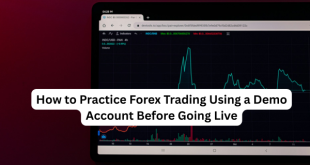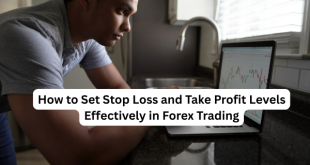Getting into forex trading doesn’t require a massive bankroll. In fact, many successful traders began their journey with small accounts. The key is knowing how to manage risk, stay disciplined, and use the right tools. If you’re looking to start forex trading with a small account—say $100 or even less—this guide will show you how to do it the smart way.
1. Understand the Basics First
Before putting any money into the market, it’s crucial to understand what forex trading is. Forex, short for “foreign exchange,” involves trading currency pairs like EUR/USD, GBP/JPY, or USD/ZAR. The goal is to profit from changes in currency values.
Take time to learn:
- How currency pairs work
- What moves the forex market (e.g., interest rates, news, economic indicators)
- The different trading styles (scalping, day trading, swing trading, etc.)
Tip: Use free online resources or YouTube tutorials to build a strong foundation.
2. Choose a Reliable Forex Broker with Low Minimum Deposits
Not all brokers are created equal. To trade with a small account, you need:
- A low minimum deposit requirement (under $100)
- Micro or nano lot trading (allows you to trade small positions)
- Low spreads or commissions
- Regulation by a trusted authority (like FSCA, FCA, ASIC, or CySEC)
Popular brokers for small accounts include:
- Exness
- XM
- IC Markets
- OANDA
Always do your own research and check reviews before choosing a broker.
3. Use Leverage Cautiously
Leverage allows you to control a large trade with a small amount of money. For example, 1:100 leverage means you can trade $10,000 with just $100.
Sounds good, right? Be careful—leverage magnifies both profits and losses. If you’re new, start with low leverage (1:10 or 1:20) until you understand how it affects your trades.
4. Master Risk Management
This is where most traders fail. With a small account, you must protect your capital at all costs.
Follow these rules:
- Risk only 1-2% per trade
- Always use a stop loss
- Avoid revenge trading or overtrading
- Don’t try to “get rich quick”
For example, if your account is $100, risk no more than $1-$2 on a single trade.
5. Start with a Demo Account
Before risking real money, practice with a demo account. This allows you to:
- Test your strategies in real-time market conditions
- Understand how your broker’s platform works
- Build confidence without financial risk
Once you’re consistently profitable on demo, then move to a live account with your small deposit.
6. Use Simple Strategies
Complex strategies often confuse beginners and lead to poor decisions. Stick to simple, proven techniques like:
- Breakout trading
- Support and resistance
- Moving average crossovers
Pick one and master it before moving on to others.
7. Be Patient and Stay Consistent
Forex trading is not a get-rich-quick scheme. With a small account, you won’t double your money overnight—and that’s okay.
Focus on building good habits, staying consistent, and growing your account slowly over time. Even a 5% monthly gain can add up significantly through compounding.
Final Thoughts
Starting forex trading with a small account is absolutely possible—but it requires education, discipline, and smart decision-making. Don’t rush the process. Learn, practice, and protect your capital. If you do that, your small account can grow into something much bigger over time.
Ready to get started? Open a demo account today and begin practicing the right way.
 UBUCH ubuch | Honest Tech Reviews & Tutorials for Everyone
UBUCH ubuch | Honest Tech Reviews & Tutorials for Everyone




